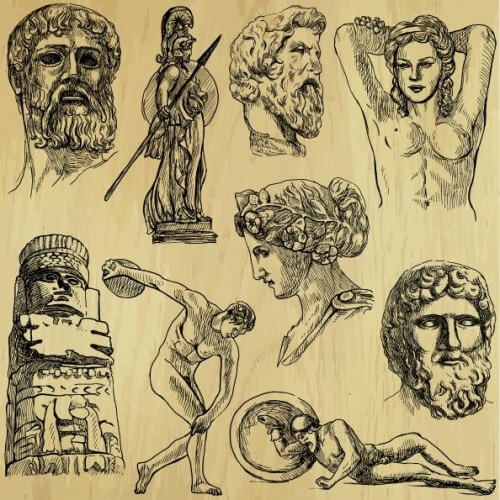In this series I proved layer by layer, section by section I sought to prove that the Jews of the Middle Ages and the Renaissance, not only were not far from the field of sports at all, but were present in it and engaged in it relatively, which would not embarrass the local environment.

For all episodes of the "Muscle Song" series
So what did we have?
When I opened the current series, "The Song of the Muscles", it seemed that we would be content with a minimal number of lines to summarize the suffering, the troubles, the humiliations and the spirituality, but not the sport, and it turns out that "not as she screamed" - layer by layer, section by section I sought to prove that The Jews of the Middle Ages and the Renaissance, not only were not far from the field of sports at all, but were present in it and engaged in it relatively, which would not embarrass the local environment.
We witnessed the compilation of exercise exercises, which included exercises to relax the muscles; to determine the gradualness of the labor; for differentiation and internal classification within the sport itself, such as toil, ball games, wrestling, dance and more; to determine rules for different branches such as ball games and wrestling; to distinguish the gradual development of the ball games; For the development of different types of play equipment such as balls, rackets and swimming aids and more.
These activities were influenced by the local environment and were expressed in branches such as ball games ("Pluta", tennis games and more such as the "muddy"), riding, holding quasi-chivalric tournaments, sailing and hunting. And on the other hand, there was a projection from the Jewish community to the local environment, such as the fields of wrestling, fencing and dancing which became art.
Increasing awareness of sports among Jewish society, such as inculcating the desire to watch local sports competitions, cannot be eliminated.
I tried to show that a number of factors came together to clarify the degree of sporting activity among the people of Israel during the period in question. The factors are these - physical activity for the body's medicine and health; physical activity for the sake of mental health and the creation of the correlation between body and mind; physical activity for pleasure, for "pleasure" for guys and to relieve various tensions and more; The ease and permissiveness of the community leadership both from the understanding of the importance of the sporting activity and from the constraint of increasing the sporting activity and the positive awareness towards it, whereupon the community leaders resorted to the well-known rule that the public is not to be judged if it cannot or does not want to obey the decrees.
Out of a research interest, I sought to trace the motives and historical circumstances that stood behind every phenomenon of physical activity among European Jewry, and these are: Jews served as soldiers and some even as knights, and hence they were physically trained as part of their military service; The poor security situation in Europe required many thoughts involving physical activity; Jews were subject to ecclesiastical "heavenly judgment" and some of them trained themselves to comply with the judgment; Quite a few Jews, and especially Maimonides, published medical treatises, including the connection to sports; The preoccupation of some of the Jews with philosophy and the teachings of the soul brought them closer to revealing the special relationship between the body and the soul, and to what extent the two create the sought-after, harmonious perfection, when physical activity is used as a means to achieve "the perfection of the measurements", because the human body dictates the "image of God in it", and thus the life , indirectly at least, those ancient classical Greek concepts of the ideal harmony between force and spirit.
The tradition of learning and teaching, which belonged to the Jews, also qualified the positive awareness of physical activity. We witness the very teaching of this or that sport by Jewish teachers, both among their community and among the Christian environment. Jews published books on the subject, such as fencing and dancing. We also saw that Dardakim teachers used to exercise with their students and even considered it an important pedagogical tool.
Jews became famous, especially in Spain, in the heat of the craft of leather, wood and metal products. This way we will also understand the distribution of the fine leather and wooden balls, the tennis rackets and the swords.
The multitude of rivers in Europe created quite a few stimuli among the Jews for both swimming and sailing.

4 תגובות
Yahyam Let's hope you don't leave us at the end of the series. There is no shortage of history subjects of scientific interest.
*Instead of "courage" you should say "handful".
It's a shame to burden so many things on people whose actions we have no knowledge of. Isn't it even if physical training is a good thing, it is certainly a means and not an end, therefore it is certain that those who participated in the competition would not have done so according to the opinion of the community, but rather had the fringes and the courage.
Hey Dr
And what about the Jewish zeitgeist?